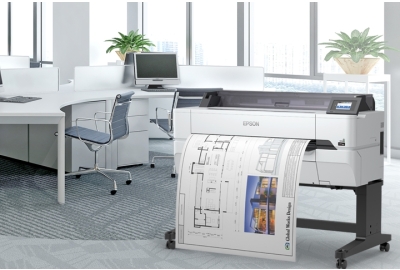In-house Large Format Auto-CAD Printing makes sense - and we'll prove it
The value of the Indian print industry was estimated to be over 330 billion Indian rupees as of fiscal year 2019. This is expected to shoot up to almost 410 billion rupees by fiscal year 2024, demonstrating an astonishing growth in the sector[1]. So instead of outsourcing your print jobs to a third party, now, is the right time to invest in a high-quality printer.
With the economy on your side, whether you need to print CAD drawings, big event banners, GIS surveys, posters and POS promos, or similar high-quality printed materials, a new in-house large-format printer could save you time and money. Here's how.
In-house printing to save ... money
When talking about outsourcing large-format printing versus bringing it in-house, the maths works out like this: With the former, you can save money now. With the latter, you're trying to save more money in the long run.
Let's compare outsourcing an outdoor banner project to a printing company against purchasing a device from the Epson T-series range. We want to print 30 glossy outdoor banners, 594 x 841 mm in size. We plan to do this at least three times a year.
What do we see?
We find that when outsourced, the total cost, based on a quote from a professional imaging company, is almost the same as the price of a new Epson T-series printer such as the Epson SureColor SC-T5430 Technical Printer This means never having to outsourcing again. And what’s more? In just over a year, it pays for itself. As it has ultra-low power consumption, it also won't suck up electricity - helping to keep your overheads low.
In-house printing to save ... time
The second big factor of outsourcing a major print job to a third party is the time it takes to deliver the products. On an average the turnaround usually takes about two days (not including shipping). With our in-house printer, it's instant - all it takes is the time to print.
To put this in numbers, the Epson SureColor SC-T5430 can print A1 drawings in as little as 25 seconds.
So, comparing the two again:
- Outsourced: Request a quote, accept price, wait for the job turnaround, wait for the shipping, then you have your product. If there are any issues, you go back to the company and ask them to re-do the job, repeating the cycle (assuming they don't push back). If a higher-paying client comes along requesting an expedited service, you may get bumped down the priorities list.
- In-house: Decide to print, send the job to the printer, come back a bit later to collect the banners. If there are any issues, you ask your graphics team to fix them and then send a new job to the device. And because Epson uses modern inkjet technology, with few moving parts to replace or repair, maintenance is minimal and therefore IT delays are reduced.
In this example, not only are we saving time on the printing job itself, but at the quality control stage as well. We have full control over the printing process from design to checking the finished product.
So is in-house printing the best option?
Not for everyone, but certainly for more companies than they realise.
If all you need is a one-off job every now and then, you may still find outsourcing the logical cost-saving option. However, with modern day inkjet technology, technical and graphics printers have such a low total cost of ownership (purchase price, consumables, electricity and maintenance) that any company across industries that has regular large-format printing needs would be wise to at least investigate an in-house device.













